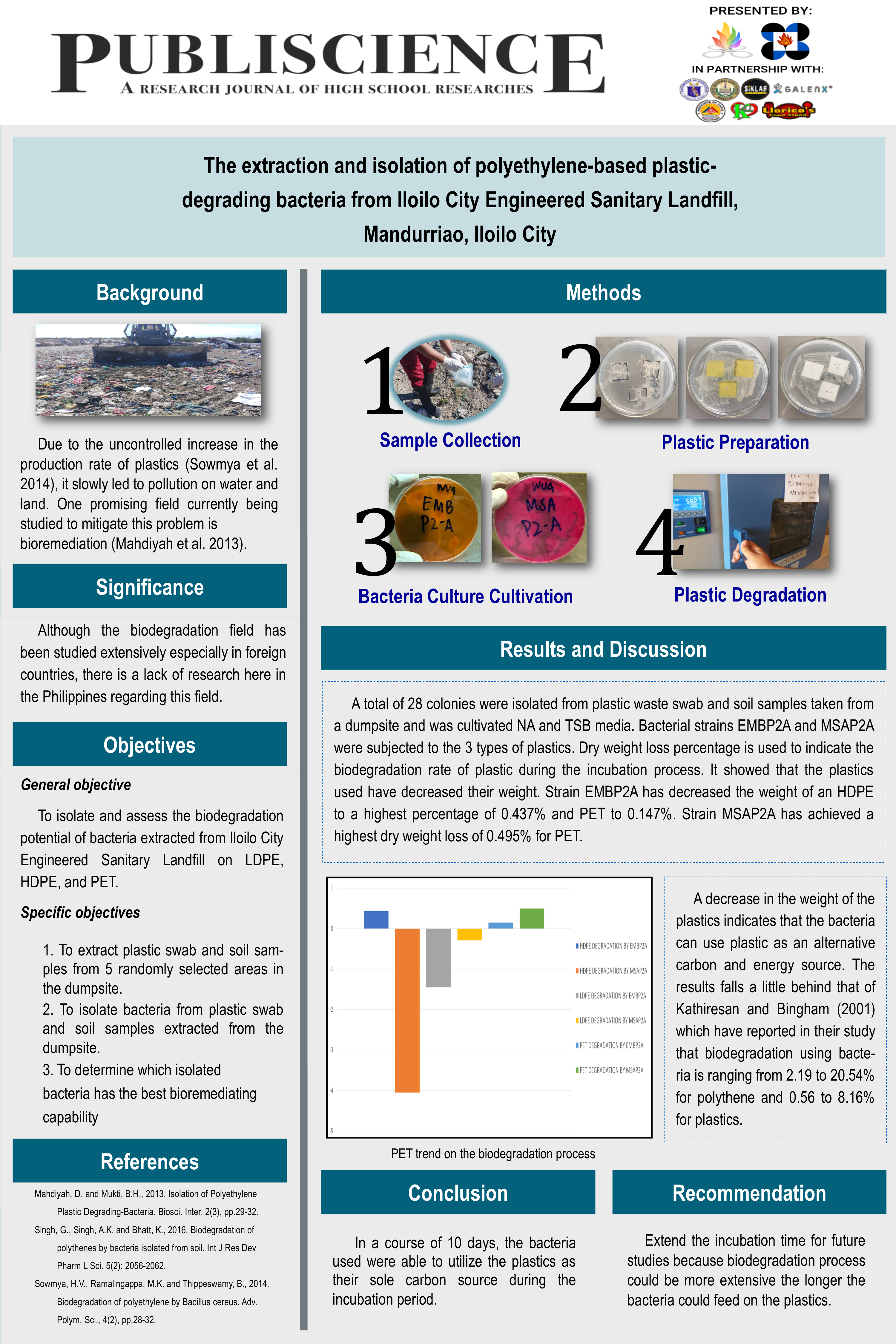The extraction and isolation of polyethylene-based plastic-degrading bacteria from Iloilo City Engineered Sanitary Landfill, Mandurriao, Iloilo City
JEREMY SEAN O. CANJA, REX S. HILIS, JV C. GALAN, and FERNANDO CHRISTIAN JOLITO III
Philippine Science High School – Western Visayas Campus, Brgy. Bito-on, Jaro, Iloilo City 5000, Department of Science and Technology, Philippines
Abstract
Plastics are known for being a durable material while still maintaining a low cost of production. It is an important material for commercial use all over the world. However, due to the lack of a reliable method of disposal, the risk of plastic pollution is steadily increasing throughout the years. Bioremediation is a promising method in this aspect as it is an eco-friendly way of dealing with this problem. Thus, this study aimed to extract and isolate bacteria from Iloilo City Engineered Sanitary Landfill and determine their biodegradation capability on low density polyethyelene, high density polyethyelene, and polyethylene terephthalate. Bacteria were extracted from randomly chosen sites and two strains were identified, EMBP2A and MSAP2A. There were three set-ups done in triplicates: EMBP2A cultivated with LDPE, HDPE, and PET, MSAP2A cultivated with the same plastics, and the control set-up with the bacteria-free medium. After 10 days of incubation, Strain EMBP2A had decreased the weight of an HDPE plastic to a high percentage of 0.437% and PET to 0.147%. Strain MSAP2A had achieved the highest dry weight loss of 0.495% for PET.
Keywords: bioremediation, strain, LDPE, PET, HDPE

